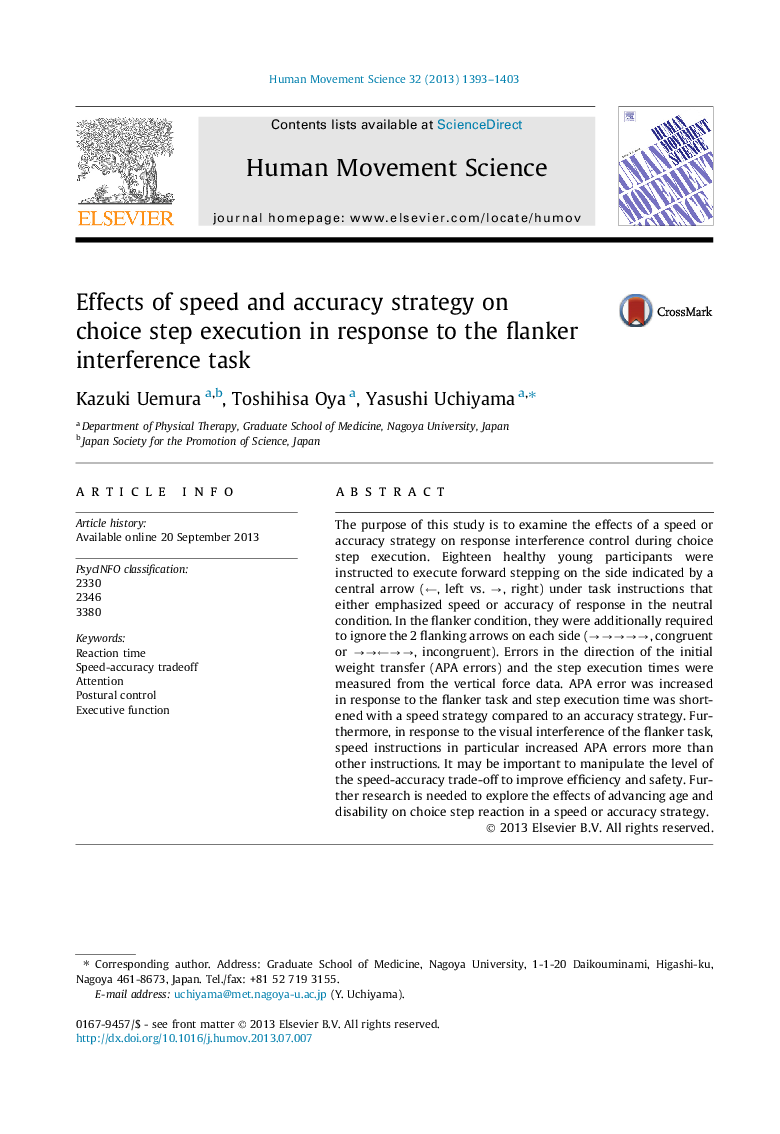| Article ID | Journal | Published Year | Pages | File Type |
|---|---|---|---|---|
| 10459152 | Human Movement Science | 2013 | 11 Pages |
Abstract
The purpose of this study is to examine the effects of a speed or accuracy strategy on response interference control during choice step execution. Eighteen healthy young participants were instructed to execute forward stepping on the side indicated by a central arrow (â, left vs. â, right) under task instructions that either emphasized speed or accuracy of response in the neutral condition. In the flanker condition, they were additionally required to ignore the 2 flanking arrows on each side (âââââ, congruent or âââââ, incongruent). Errors in the direction of the initial weight transfer (APA errors) and the step execution times were measured from the vertical force data. APA error was increased in response to the flanker task and step execution time was shortened with a speed strategy compared to an accuracy strategy. Furthermore, in response to the visual interference of the flanker task, speed instructions in particular increased APA errors more than other instructions. It may be important to manipulate the level of the speed-accuracy trade-off to improve efficiency and safety. Further research is needed to explore the effects of advancing age and disability on choice step reaction in a speed or accuracy strategy.
Keywords
Related Topics
Life Sciences
Neuroscience
Cognitive Neuroscience
Authors
Kazuki Uemura, Toshihisa Oya, Yasushi Uchiyama,
